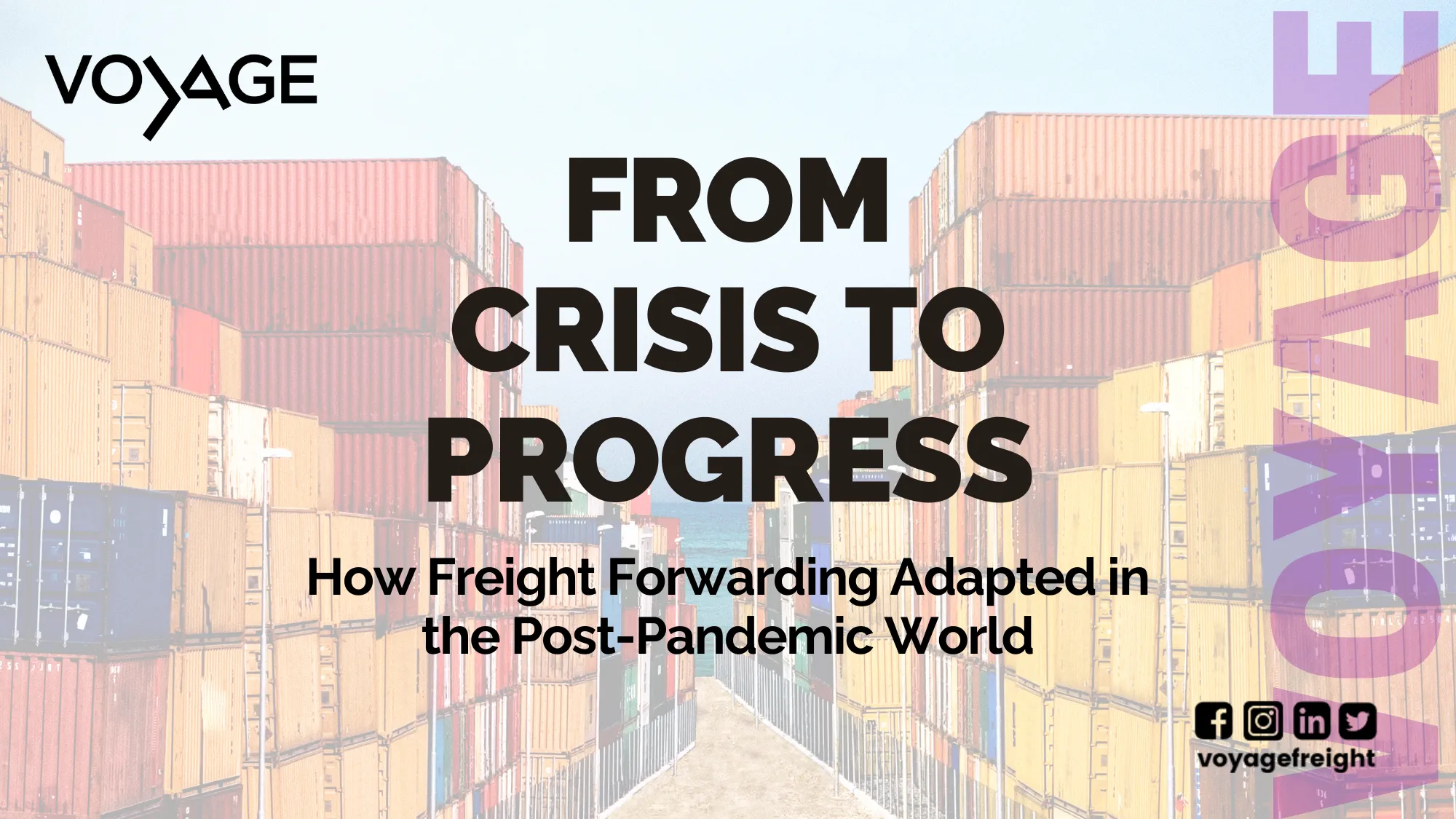
From Crisis to Progress
How Freight Forwarding Adapted in the Post-Pandemic World
In the wake of a global crisis, resilience and adaptability become paramount for any industry. When it comes to the world of freight forwarding, these qualities have proven to be essential in navigating the shifting tides of the post-pandemic landscape. In this blog post, we delve into how this vital sector has not only weathered the storm but also emerged stronger than ever before. Join us on a journey from crisis to progress as we explore the innovative solutions and transformative strategies that have propelled freight forwarding into a new era of efficiency and success. Get ready to discover how this resilient industry has not just survived but thrived in our rapidly changing world.
The Impact of COVID-19
Unprecedented Disruptions
The outbreak of COVID-19 sent shockwaves through global supply chains. With lockdowns, restrictions, and the fear of a highly contagious virus, trade came to a standstill. Freight forwarding, which plays a vital role in moving goods across borders, faced unprecedented disruptions.
Supply Chain Struggles
As the virus spread, the supply chain was severely impacted. Manufacturers were forced to shut down, leading to delays and shortages of essential goods. The demand for medical supplies surged, putting immense pressure on freight forwarders to deliver life-saving equipment promptly.
Navigating Uncertainty
In this chaotic landscape, freight forwarders had to navigate uncertainty. Travel restrictions, fluctuating demand, and the risk of infection made their operations challenging. However, the industry quickly adapted to the “new normal.”
The Freight Forwarding Industry's Response
Digital Transformation
One of the most significant changes was the acceleration of digital transformation. Freight forwarders realized the need to reduce physical contact and paperwork. This led to the adoption of digital platforms and technologies to streamline operations.
Embracing Automation
Automation became a cornerstone of success in this new era. From automated order processing to self-service cargo tracking, forwarders embraced technology to minimize human touchpoints and increase efficiency.
Enhanced Safety Protocols
The safety of employees and customers became a top priority. Freight forwarders invested heavily in safety protocols, ensuring that goods were transported with minimal risk of contamination. This included sanitization, contactless delivery, and health checks for staff.
Flexibility in Operations
The pandemic taught the industry the value of flexibility. Freight forwarders diversified their routes and modes of transportation, ensuring that essential goods reached their destinations even in the face of unforeseen challenges.
Sustainability Initiatives
The crisis also accelerated sustainability initiatives. Freight forwarders recognized their role in reducing carbon emissions. They introduced eco-friendly packaging, optimized routes, and adopted energy-efficient transportation methods.
Positive Outcomes
Stronger Global Networks
Adversity brought the industry closer. Freight forwarders formed stronger global networks, collaborating to find solutions to the complex challenges posed by the pandemic. These relationships continue to thrive, benefitting trade in the post-pandemic era.
Streamlined Processes
The push for digitalization led to streamlined processes. Transactions that once took days were now completed within hours. The industry became more agile, responsive, and cost-effective.
Resilience and Innovation
The freight forwarding industry’s response to the pandemic showcased its resilience and innovative spirit. Forwarders didn’t just adapt to survive; they thrived by embracing change and finding creative solutions to emerging problems.
Looking to the Future
Continued Digital Advancements
The freight forwarding industry’s digital transformation is far from over. It will continue to invest in cutting-edge technologies, enhancing the customer experience, and further improving operational efficiency.
Focus on Sustainability
Environmental consciousness will remain a key focus. Freight forwarders will intensify their efforts to reduce their carbon footprint and promote sustainable practices throughout the supply chain.
Stronger Partnerships
The pandemic underscored the importance of collaboration. Freight forwarders will continue to build strong partnerships with carriers, shippers, and governments to ensure a resilient and efficient global supply chain.
Supply Chain Resilience
Lessons from the pandemic will drive the industry’s commitment to building resilient supply chains. This will include diversifying sourcing, creating redundancies, and developing contingency plans for future crises.
Conclusion
In the face of an unprecedented crisis, the freight forwarding industry emerged as a symbol of adaptability, resilience, and progress. The COVID-19 pandemic accelerated digitalization, encouraged innovation, and strengthened global connections. As we move forward, the industry remains committed to enhancing its operations, reducing its environmental impact, and ensuring the seamless flow of goods around the world. The future of freight forwarding is brighter than ever, and it’s a testament to the unwavering spirit of the industry.

